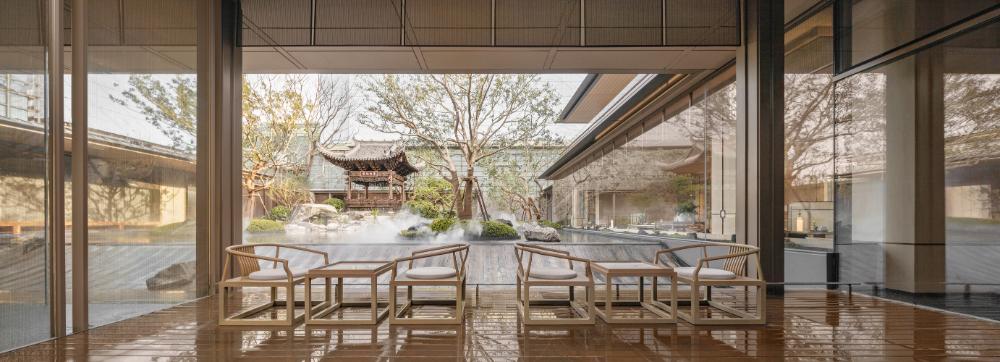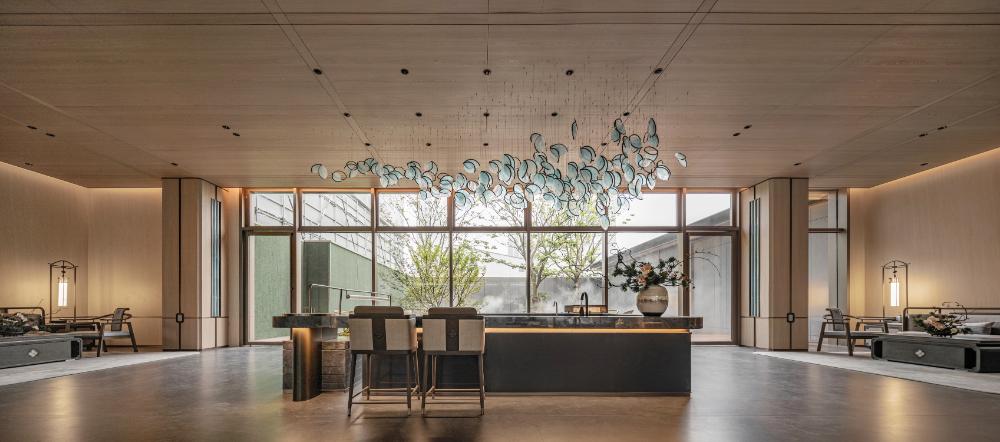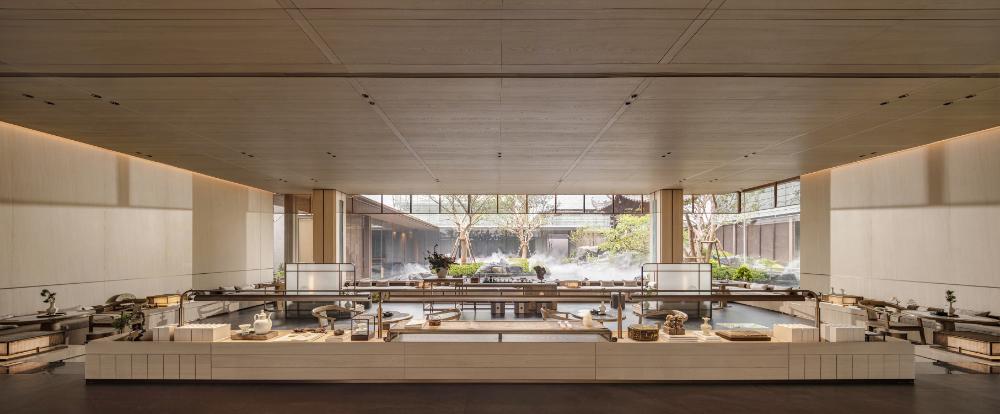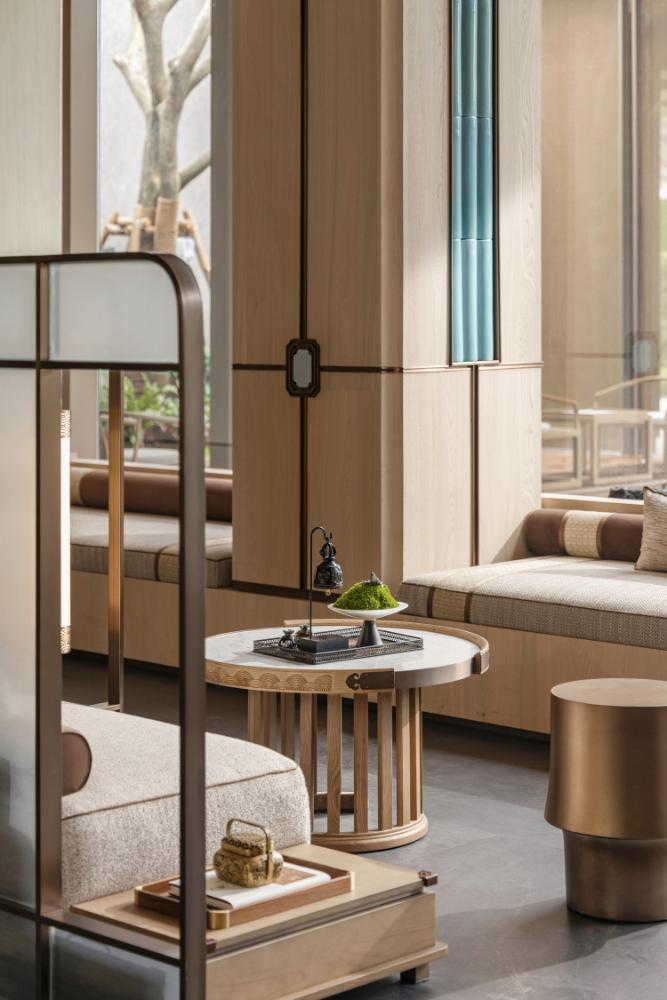Best of Soft Decoration
Designer / Agency
- ARTID DESIGN
Category
- Soft Decoration
Award
- 2023 Innovation
Share this project
PROJECT
DESCRIPTION
This project is located in Nanchang City, Jiangxi Province,China. From the rich cultural landscape and soil of Jiangxi, countless Jiangxi literati and handed down attainments, that changed the Song Dynasty and influenced the contemporary era, were born. They continue to this day along the water of the Gan River and the change of dynasties.
Therefore, for this project we intensively researched the Jiangxi humanities and inherited the oriental Song charm that lasting through thousand years, to design and customize an great cultural context with the theme of the Song Dynasty. This place with rich cultural heritage of the Song Dynasty will usher in the prosperous age of Eastern culture. The garden is based on the famous Song Dynasty painting "Xiyuan Ya Ji", which means “The Elegant Gathering in the West Garden”. It is like attending a banquet in the elegant gathering garden, using a progressive spatial etiquette sequence to unfold.
"Ya Ji", "Ji" means gathering, and “Ya Ji” is an elegant gathering. Ancient Literati have many elegant tastes. They meet close friends in official circles, enjoy poetry and wine, attend banquet and drink tea, cook tea and light incense, hang paintings and arrange flowers, play chess, practice calligraphy and painting. From the painting “Xiyuan Ya Ji” , we trace the lifestyle of the elegant scholars in Jiangnan region in the Song Dynasty, extract the four elegant arts, and highlight them. The Four “Ya”s , which are tea, flower arrangement, hanging paintings, and burning incense, carry out space design topics. The Four “Ya”s express daily life through taste, touch, smell and vision, and combine the daily life of literati in the Song Dynasty with the local Yuzhang culture to create a fusion of modernity and tradition.
The reception hall follows the ceremonial sequence of the four entrances to the garden. The breeze is blowing, and as you step into it, you will see the natural landscape stones and exquisite decorative screens. The stone leads your way to the room, making the tall and spacious reception hall appear upright spirit,the green pines also welcome you,starting from the home-like reception hall, the poetic journey of the Xiyuan Ya Ji begins.
The water bar area has the theme of "burning incense". In the Song Dynasty, burning incense was integrated into tea culture, flower culture, painting culture and other cultural forms, forming a unique cultural phenomenon. In daily life, burning incense is a way of savoring life, which can create a peaceful and elegant atmosphere, help people relax their body and mind, and regulate their emotions. There is a profound historical and cultural connotation behind the elegance of burning incense among the Four “Ya”s of the Song Dynasty. Light an incense burner and let the smoke swirl around the beams,the inward bar area uses "pine" as the main immersive art installation on the facade of the space, hoping to connect with the outdoor natural ecology through artistic construction.
The scene at the end of the passage is themed "hanging pictures". Teng Wang Pavilion is a unique cultural heritage left to Nanchang by ancient ancestors. It embodies the architectural aesthetics and artistic value of ancient China. Teng Wang Pavilion not only has historical significance and cultural value, but has also become one of the iconic buildings in Nanchang City.
The hanging painting at the end of the passage refers to the local culture of Tengwang Pavilion. It also combines with the elements of the Xiyuan Ya Ji to depict mountains and rocks. Through the hierarchical relationship from near to far, the close-up view shows the line texture of Taihu stone, and the distant view shows the profile of Tengwang Pavilion.
Nanchang is the nest of Yuzhang culture. Its ancient buildings, brick carvings, stone carvings, and wood carvings are simple and exquisite. The ornaments in the passage connect with the theme of "hanging paintings". In addition to displaying scrolls about "Xiyuan Ya Ji", they also use local cultural brick carvings, wood carvings, and antiques as the display themes to create the all-too-familiar sense of cultural experience. It focuses on the extension, elegance and value recognition of humanistic charm and integrate them into modern lifestyles, with new twists on ancient tunes, reaching the ultimate level in the presentation of this space.
The sunken area is surrounded by two themes, and "flower arrangement" is one of its themes.
In the Song Dynasty, flower arrangement became a popular art form. Its creation not only involved the selection, pruning, collocation and placement of various flowers, but also integrated cultural elements such as poetry, calligraphy and painting, showing its unique aesthetic taste and cultural connotation. Flower arrangement in Song Dynasty not only promotes cultural exchanges and friendly exchanges, but also promotes the development of flower culture and flower art.
The sunken area uses a large area of glass curtain wall to connect the indoor and outdoor scenery. The glass wall combines with the indoor scenery wall to form an extension. When people are indoors, it reminds them a poetry "the green branches are full in front of the window, and the beautiful garden scenery comes into the home". They can just sit around and watch the scenery, the sunset, the rays of light and the shadows of trees reflect on the wall. It is like using the brush gifted by nature to paint with the shadows of flowers and trees, and the flowers naturally come from the painting.
Confucian scholars in the Song Dynasty often associated philosophy with flowers and trees. They often use flowers to allude to personality and express life aspirations and ideals. The flower materials in the sunken area are simple and elegant, such as pine, cypress, orchid, osmanthus, camellia, etc. The structure focuses on the spirit of purity, reflecting the free and pure artistic conception.
In the sunken area, a flower table and a tea table are set up in the scenery room. The balcony is reflected in the pool, and you can enjoy the turquoise and rocks. The fragrance of tea overflows, and the light tea mist surrounds the tea cup, flying as light as smoke. The two Ya theme displays are integrated, the garden merging into the painting. Appreciating the spatial meaning of poetry, "there is scenery in front of the window, mountains and rivers in the heart, and heaven and earth in the tea", customers can experience the cultural atmosphere of Song-style aesthetics more immersively.
The Song Dynasty observed the true meaning of life in every detail of the Four Ya Things, and as it is known to us: elegance created interest. The literati tried to carve out a quiet and elegant aesthetic space as their spiritual habitat outside of secular life.

Agency:ARTID DESIGN
ARTiD Design Studio aims to integrate design vision with humanistic and philosophical thinking and create an international perspective team along the way.
In the context of China's rapid development, we focus on locating a serene and long-reaching design cultural thinking path, and lead a new quality lifestyle with a unique perspective. Design can create a new vision that never exists before and can also be humanistic philosophy!




















